Household fans: types, selection and do-it-yourself manufacturing
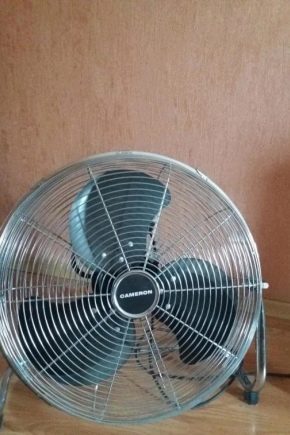
In hot weather, people often use household fans. They are compact, practically silent and create an atmosphere of coziness and comfort. These devices will be discussed in the article.

What it is?
It is good to put a small household fan in a private suburban household - usually such devices "spud" up to 25 square meters. m of usable area. The power of such a device for the home can reach 50 watts. In modern fans, which are purchased in specialized stores, there are three speeds, there is also a swivel unit that can be easily turned off if necessary. Such units are controlled using the remote control or buttons located on the panel at the base of the device.
There are two main types of cooling devices:
- centrifugal;
- axial.
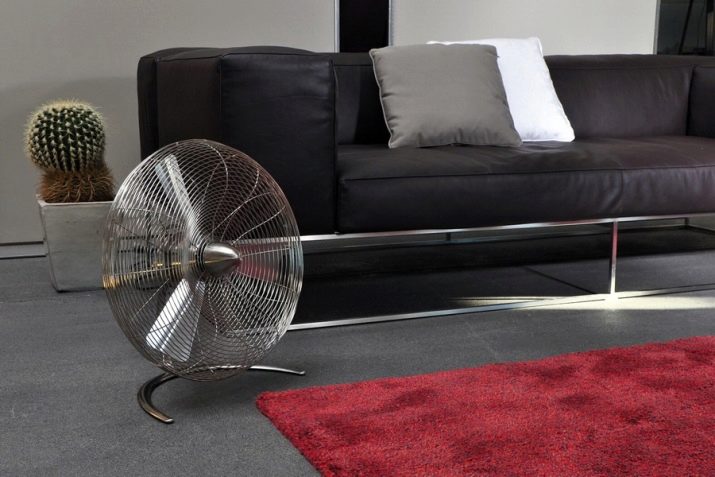
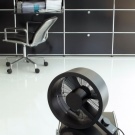
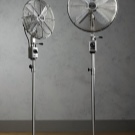

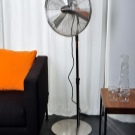
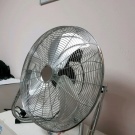
The second option is used at home more often, since it creates insignificant air pressure. The impeller of the device can consist of 3 blades, or maybe 30. The device of such a unit is made as follows:
- blades are attached to the sleeve;
- the bushing itself is mounted on the axle;
- the axle rotates thanks to the work of the electric motor, to which it is also attached.
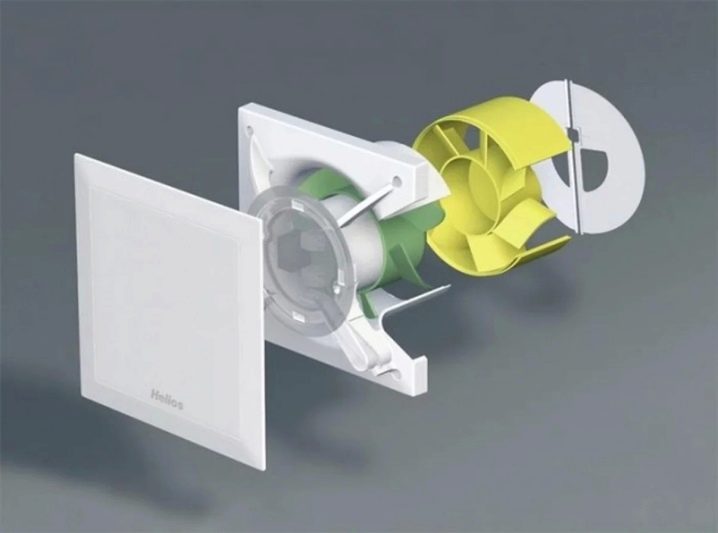
The fan generates background noise during operation. An expensive unit works with minimal noise. This is achieved through the layout of the engine and one shaft, where the rotating block with blades is located.
Views
Axial devices are of the following types:
- reversible - the blades are located symmetrically;
- without reverse - the blades are arranged asymmetrically.
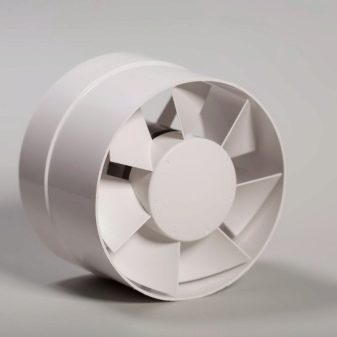
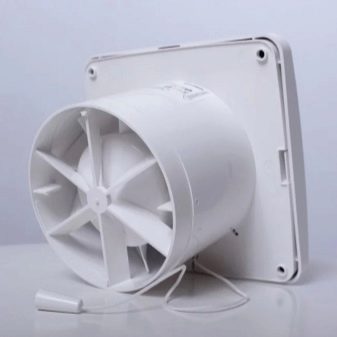
Also, fans differ in the way the impeller is made.
Reversible fans are units that operate in two modes:
- for air extraction;
- on the air flow.

Rotation of the blades can be in two different modes. Floor fans are the most popular among the general population. They cool even large rooms in a short time.
The floor fan device implies the presence of a foot that can be adjusted to your liking. Also, there are often structures in which the angle of inclination and rotation angles change. These important details make it possible to create optimal airflow conditions and additional comfort.
Floor fans are differentiated into three large subgroups:
- axial;
- radial;
- bladeless.

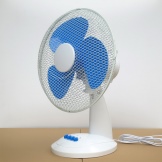
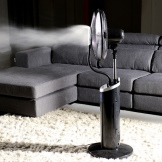
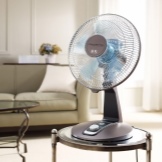
Propeller-driven axial devices are the most common. A bladeless fan is considered a more perfect type of device, because in fact it is a round metal frame, which is equipped with a working motor. During its operation, air masses are literally "pushed" into the room. These models allow you to cool large spaces in a minimum amount of time. Floor fans are often equipped with humidity sensors and air ionizers. They turn on the device in automatic mode, restoring the microclimate level set in the room. You can also find sensors that respond to the appearance of a person in the room - in this case, the fan turns on automatically.
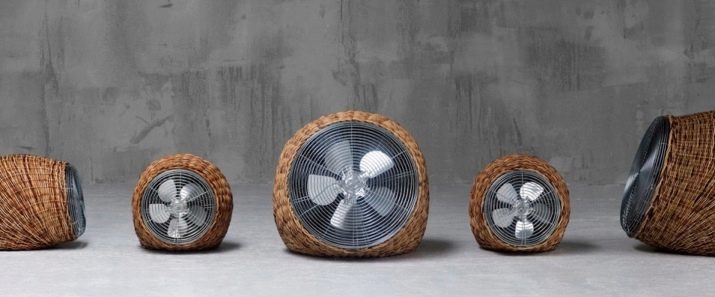
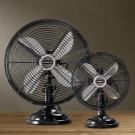
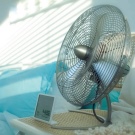
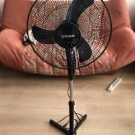
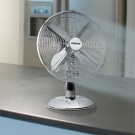

How to choose?
Buying a fan for a room is not easy, as it requires some technical knowledge. First of all, you should know exactly what the priorities are, what should be the focus of attention in the first place.The criterion for choosing a unit is its capacity, because it is it that is the main factor that determines the area of \ u200b \ u200bcoating a room with cold air. There are also various other priorities that are important to consider when making this purchase.

If the fan is of a desktop type, then its power is not so significant - for such a device, first of all, the size of the blades is important, as well as noiselessness in operation. Its use at night largely depends on the latter parameter. The reproduced noise level can vary from 30 to 45 dB. For night-time operation, the fan noise level should not exceed 42 dB. You should also pay attention to the basis of the attachment of the blades of the device. If a bushing is present, then the noise will be several times greater. The presence of a ball bearing significantly reduces this indicator, and also increases the service life of the purchased product.

Modern electronic devices can now be found on literally all household appliances, including fans.
These include:
- time indicator;
- ionization system;
- temperature and humidity indicator.

Of course, you can do without them, because the main thing is that the device must work reliably and for a long time without breakdowns.
It is also recommended to pay attention to weight when buying. With an increase in rotation speed, the coefficient of unstable equilibrium increases (with the exception of fans that are mounted on vertical surfaces). It is not recommended to buy models of unknown brands, because in the pursuit of cheapness, you can buy low-quality goods that may fail in the near future.

Rating of the best models
Hundreds of models of room fans are presented on various trading platforms - you can get confused in such a wide range. Floor fans are the quietest, so they are at the top of the list.

Mystery MSF-2402. It is an economical, powerful and inexpensive remote control device that is ideal for a suburban home. The power is 46 W. The device has three blades, the height of the device rack can be adjusted. Such a unit works at three speeds. The rotation function can be turned off if desired.
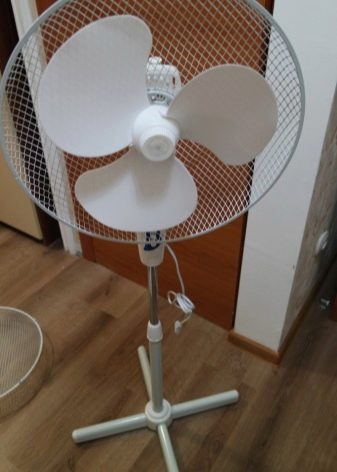
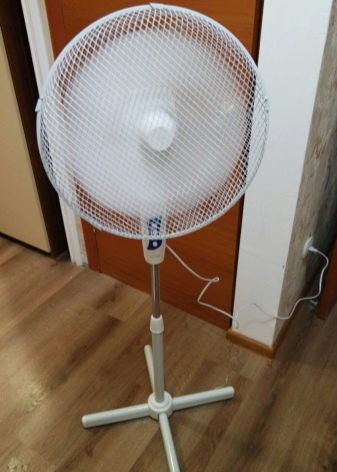
Maxwell MW-3546. This is another popular fan that can be placed on the floor. It has a spectacular look: it has a black color with white blotches. The power is 36 W. In this model, you can adjust the height, angle of rotation, speed of rotation of the blades. The device is controlled using buttons.
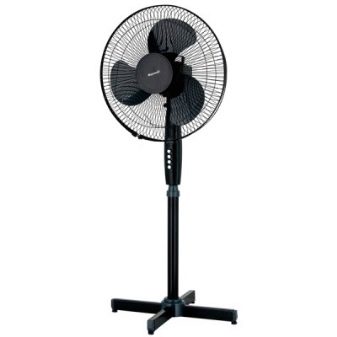

Xiaomi Mi Smart Fan Model corresponds to the "smart home" format. Controlled using a smartphone or personal computer. The unit can be programmed while away from home, through a special application on the computer.
The device has the following functions:
- change of sound signals;
- angle of rotation;
- modern design;
- setting the time mode;
- tilt adjustment of the rotating block from 32 to 125 degrees;
- changing the speed of rotation of the blades;
- choice of power supply (network or battery).
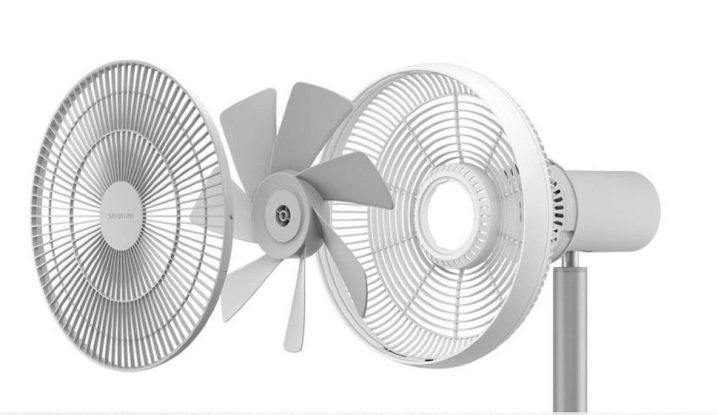
Polaris PSF 3040RC. Popular fan from the Premium segment. It is not cheap, but is in high demand among users. The power of the unit is 56 watts. There are three modes of operation. The panel contains numerous indicators that indicate the nature of the device. Advantages of work: a fresh sea wind can be created, the air flow can be changed every 2-3 seconds, and a stepwise decrease in the blowing speed is also possible. Rotation is allowed up to 90 degrees. The device is controlled from the remote control or using the buttons.

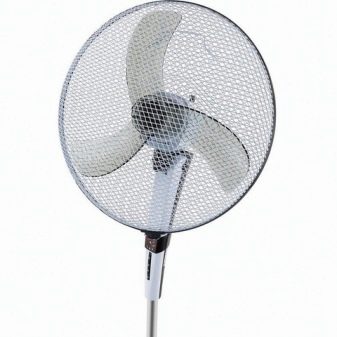
How to do it yourself?
A fan is a very simple device, and even a schoolboy can assemble it on his own.
First of all, you should prepare the required work items:
- CDs in the amount of 2 pieces;
- a small motor from a desktop cooler;
- cork;
- wire with USB input;
- a candle or lighter;
- pencil and ruler;
- special thermal glue;
- as a block, you can take any small cardboard packaging.

The advantage of this scheme is that all blocks are close at hand. The CD is divided into eight equal parts, and you can use surveying paper or an ordinary school notebook in a box. Having drawn a figure in the form of a cross, where vertical and horizontal lines are present, each of the corners is differentiated by exactly half. Also, a similar operation is easy to perform using a protractor. The result will be identical shapes that must match each other. Plastic is easily cut with a hot knife - this should be done carefully so that no melted burrs remain, otherwise you can get hurt.
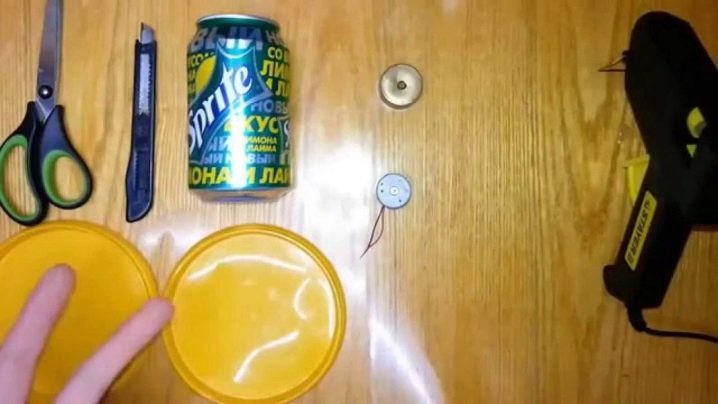
A wine stopper is installed in the hole for better fixing of the element, the joints are processed with glue. With the help of a candle flame, plastic figures should be deformed by bending them slightly. A wire with a USB port must be connected to the engine. The polarity is easily changed, therefore the direction of rotation of the blades changes. Thus, an impromptu propeller has turned out, which needs to be installed on a rotating axis. The glue allows you to correctly and securely fix all the components of the structure. It will take a little time for the whole work - no more than two hours.
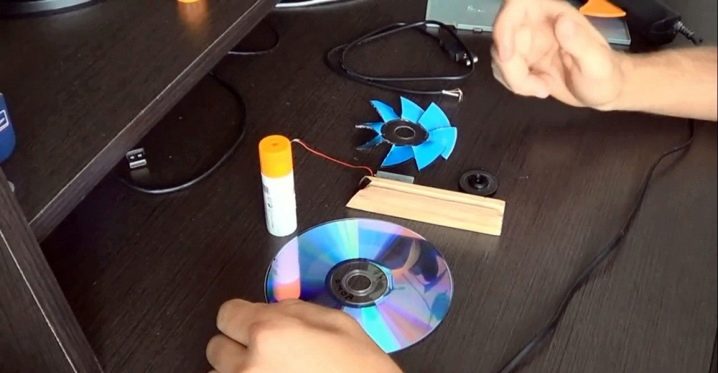
A homemade plastic bottle fan is pretty simple. There are two variants of this invention. The first is the manufacture of a 1.5 liter plastic bottle. The motor can be taken from a computer cooler.
You will also need the following components:
- finger battery;
- felt-tip pen;
- wax;
- nails;
- a piece of styrofoam;
- hot glue.
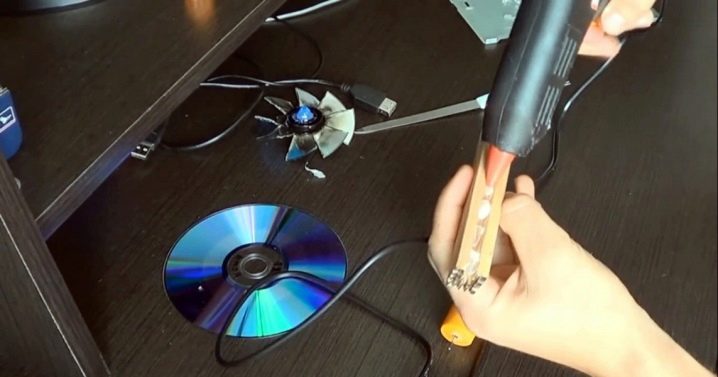
The top is cut at the beginning of the bottle label - it is easier to make a propeller out of it. The workpiece is cut into six equal slices. The edges of future blades must be rounded. With the help of a candle flame, plastic can be bent in any direction - this must be done. The blades are attached to the base using hot melt glue, then the entire product is mounted on a rotating axis. An engine is attached to the foam - this is easy to do, since the foam is cut without any difficulties. After that, all that remains is to screw the propeller onto the cork, which will firmly "sit" on the engine.
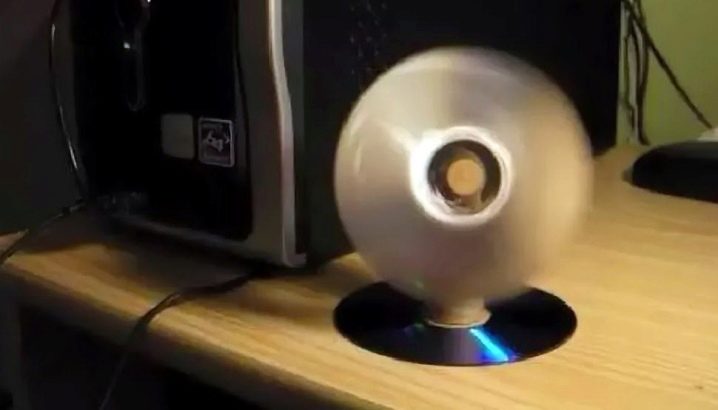
Possible malfunctions and repairs
The purchased device may show the following defects:
- the indicator is functioning, but the engine does not work;
- indicator is off;
- the fan blades are not spinning;
- during operation, the device emits a hum;
- the device does not turn on or off.
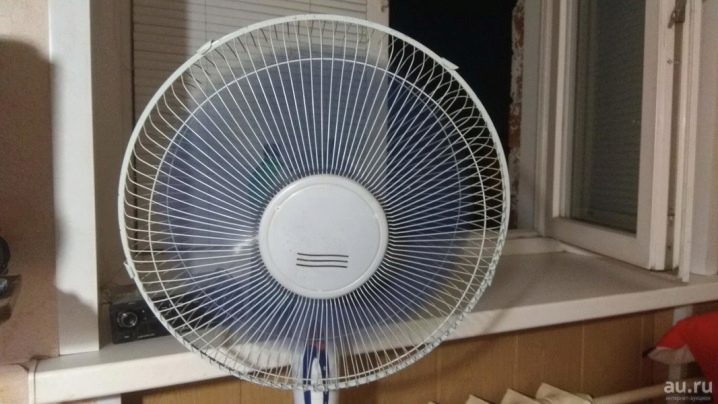
If the last malfunction occurs, first of all, using the device, you should disassemble and check the power source - the outlet. It is also recommended to inspect the plug itself - contact may be broken. If the indicator lights up, then the reason may be the failure of the unit with buttons. Then it is necessary to disassemble the unit, but the device must be disconnected from the mains. With the help of a tester, it is necessary to check the operation of each button in turn. If the button is broken, then you can make a connection directly or change this element.
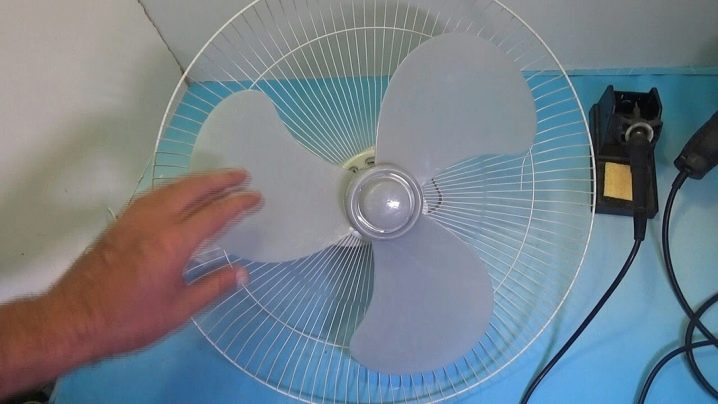
Speed switches often fail. They can also be checked using the instrument and repaired if necessary. In the event that the blades rotate poorly, it is necessary to disassemble the body of the device itself. It may be necessary to lubricate the bearing of the fan engine with engine oil. The case can be disassembled without any difficulties - just arm yourself with a screwdriver and perform a number of manipulations. The fasteners are unscrewed, and the product casing is removed. If the fan stops moving in different directions, then the crank may be to blame - its fastening screws are most likely loosened. In this case, you will need to disassemble the entire body of the device engine.
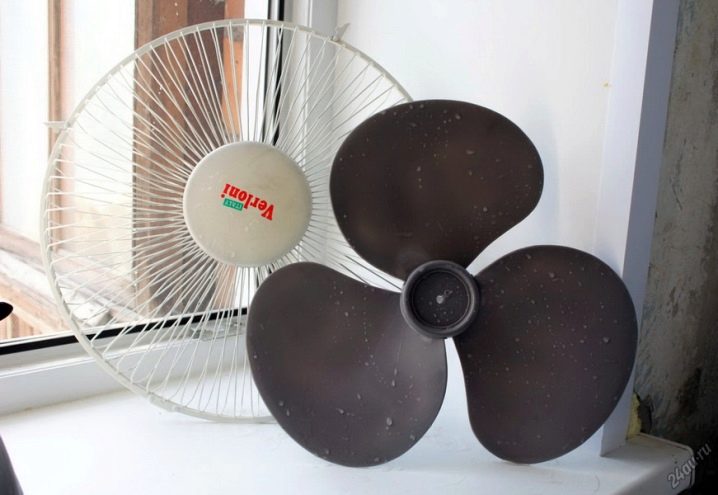
The gears in the gearbox itself may not spin well - it is also recommended to check its switch.All moving elements must be treated with machine oil, then all units must be assembled.
If the fan emits "incomprehensible" sounds or hum, then there may be several reasons here:
- lack of lubrication;
- the engine does not work well;
- the capacitor is out of order.
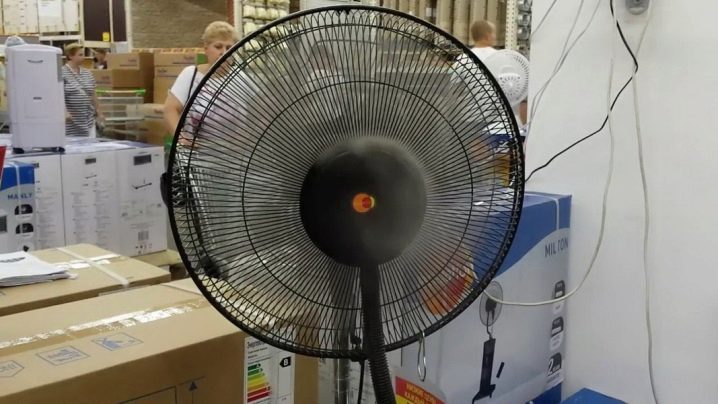
First of all, the capacitor should be checked. This is easy to do with a tester. The capacitor is located in the engine block, so the case will have to be disassembled. It is also necessary to check the engine - perhaps the malfunction lies precisely in it. To do this, the stator must be removed from the contacts. The resistance should be within 1.21 kΩ. If this is not the case, the device will hum but not work. Under such circumstances, it will be necessary to rewind again, but only in a specialized repair center, where there is professional equipment.

Sometimes it happens that the plastic of the blades deteriorates, and the product starts to make strange sounds.
Deformation can be caused by:
- exposure to ultraviolet radiation;
- mechanical damage;
- loose bushing.
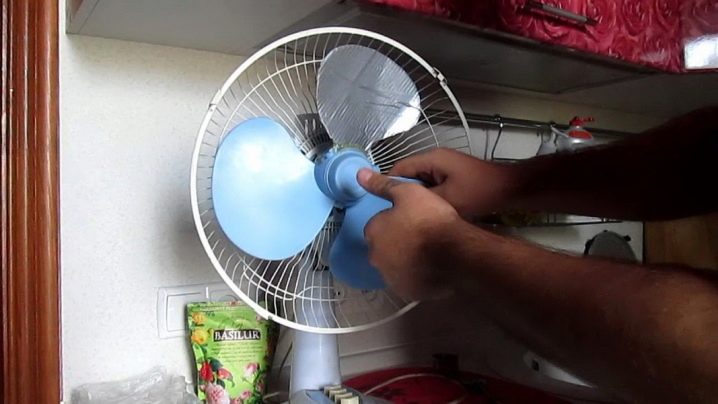
Making a household fan with your own hands is not difficult. The main thing is to follow the recommendations.
For information on how to repair a household fan with your own hands, see the next video.













The comment was sent successfully.